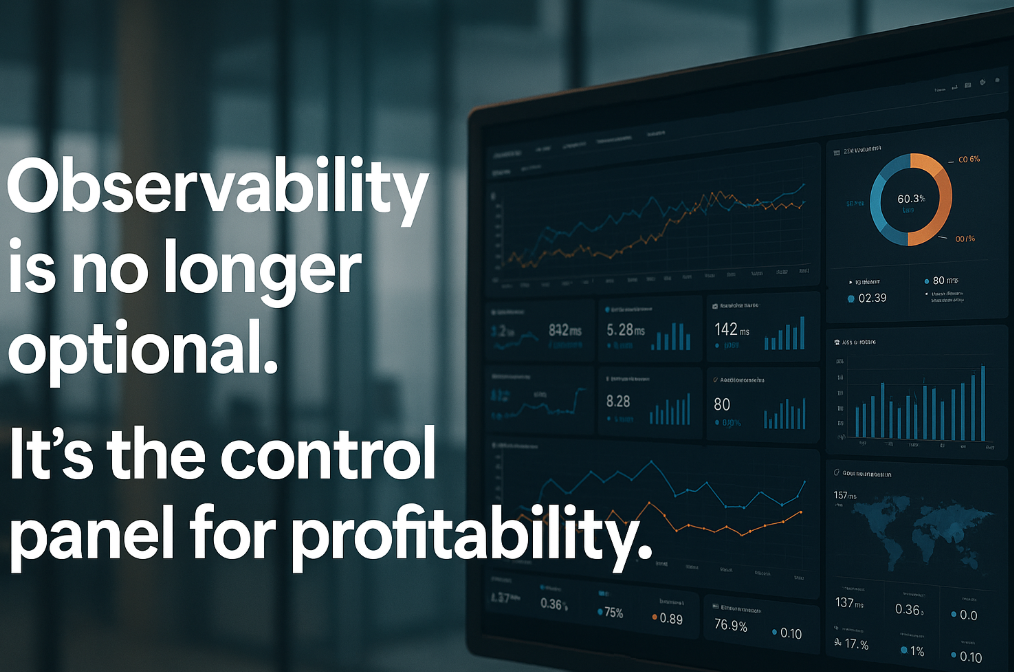Imagine a 3 MW data center spread across multiple zones, filled with enterprise-grade equipment, co-location tenants, and the usual complexities: redundant feeds, temperature differentials, embedded monitoring units, and a patchwork of legacy monitoring tools.
Now imagine this facility not as a cost center, but as a source of strategic profitability. That’s the shift I’ve been advocating for one where observability isn’t a technical upgrade, but a financial lever.
This is a suggestion for what could be done, built from years of experience across infrastructure, compliance, and data center optimization.
Why Observability is a Financial Architecture
Too often, data center operators think of observability in purely operational terms: “Know when something fails.” But what if the goal isn’t just resilience – it’s return?
In a modern regulatory and ESG-driven world, observability provides:
-
Financial precision (per-socket energy visibility → accurate cost attribution)
-
Risk mitigation (predictive insights → SLA compliance and uptime)
-
Regulatory readiness (EU directives → data lineage, auditability, traceability)
-
Capacity efficiency (avoid overprovisioning and underutilization)
I built a model to illustrate this. Here’s what it looks like.
A Hypothetical Financial Case Study
Let’s model a typical mid-sized facility operating under traditional tools, then project the financial outcomes if it embraced open-source observability with intelligent telemetry, NetBox-backed CMDB, and a data lake powered by the ELK stack.
Annual Financial Comparison – Modeled Outcomes
| Category | Legacy Tooling (€) | Open-Source Observability (€) |
|---|---|---|
| Power Cost (OPEX) | 1,200,000 | 950,000 |
| Cooling Cost (OPEX) | 800,000 | 650,000 |
| Maintenance & Downtime | 400,000 | 150,000 |
| DCIM Licensing Fees | 250,000 | 0 |
| Staffing Costs (Monitoring) | 300,000 | 250,000 |
| Compliance Penalties | 100,000 | 0 |
| Revenue from Co-Location | 2,500,000 | 2,750,000 |
| Total Operating Cost | 3,050,000 | 2,000,000 |
| Net Profit | -550,000 | +750,000 |
Design Assumptions Behind the Model
-
Power savings come from load balancing, phase correction, and proactive alerts.
-
Cooling efficiency is gained by aligning heatmaps and airflow telemetry to physical containment.
-
Downtime is slashed via deviation tracking and threshold-based alerting.
-
Licensing fees are eliminated with open-source telemetry (e.g., SNMP, Redfish, OpenTelemetry).
-
Revenue grows due to improved SLA delivery, tenant confidence, and resource transparency.
Strategic Takeaways
This is more than theory – it’s a practical lens to redesign how we see infrastructure.
-
Deviations aren’t errors—they’re opportunities.
-
Your telemetry is a balance sheet in disguise.
-
Compliance data, when automated, becomes ESG capital.
-
Open source, when structured, outperforms black-box DCIMs.
And perhaps most importantly:
Every kilowatt, every alert, every outlet reading is a conversation between engineering and finance – if you have the platform to listen.
Closing Thought
This model is fictional – but everything about it is real. The tools exist. The outcomes are provable. The only variable is the decision to redesign your observability landscape with business value in mind.
As a strategist, I don’t just design architectures – I help organizations reframe infrastructure as a source of advantage. And in a world where compliance is mandatory and efficiency is monetized, observability is no longer optional.
It’s the control panel for profitability.
